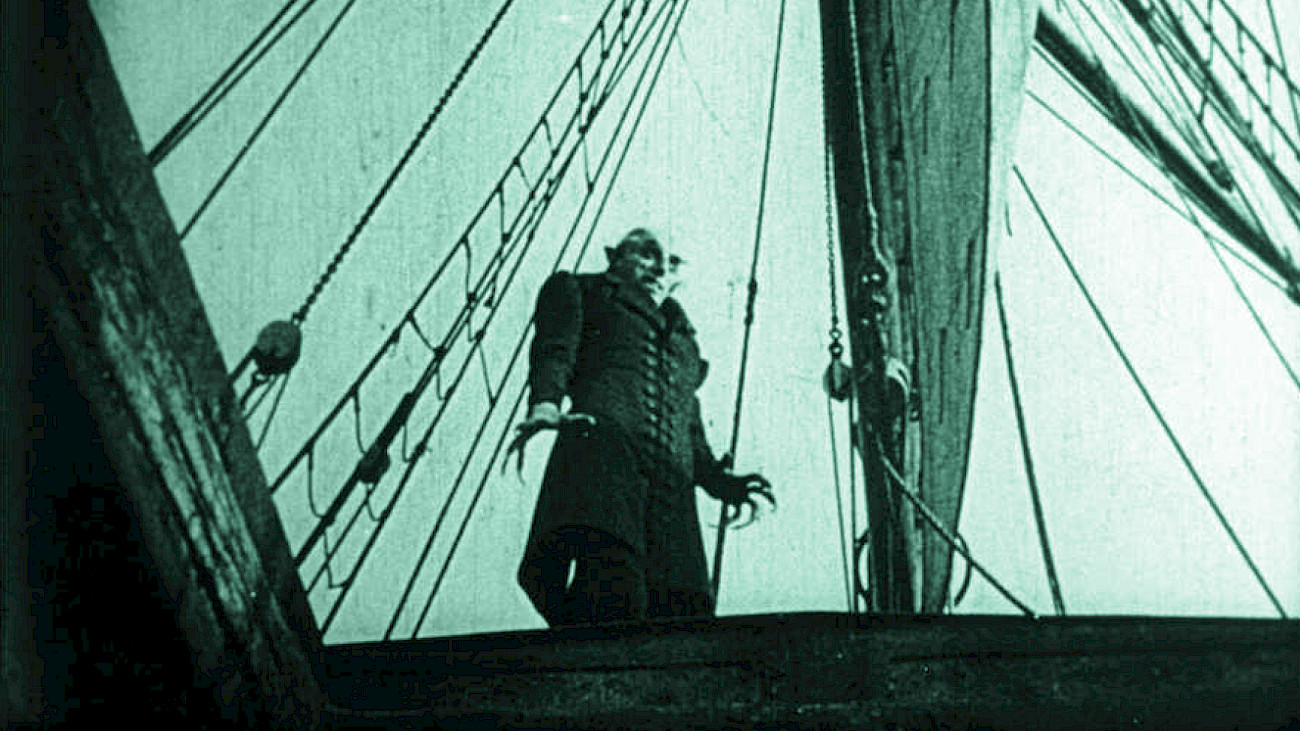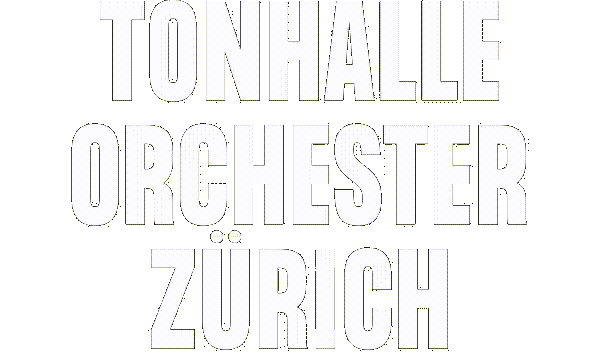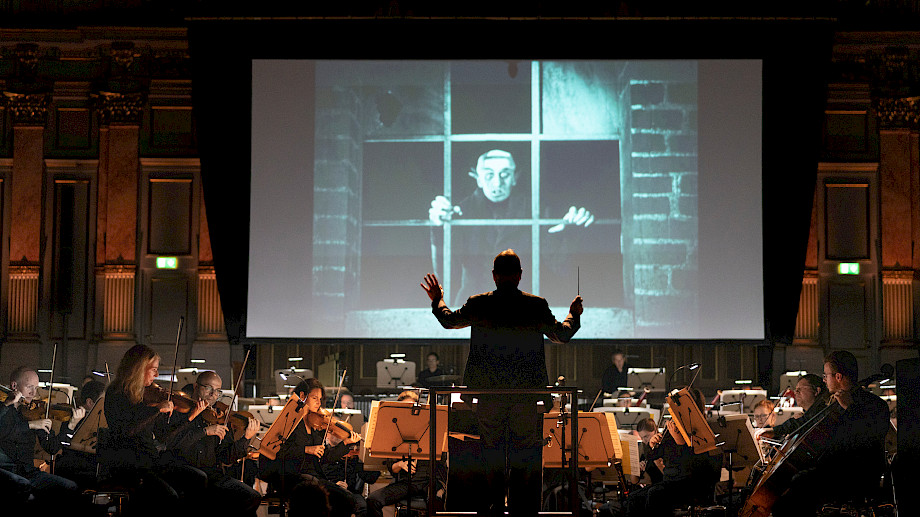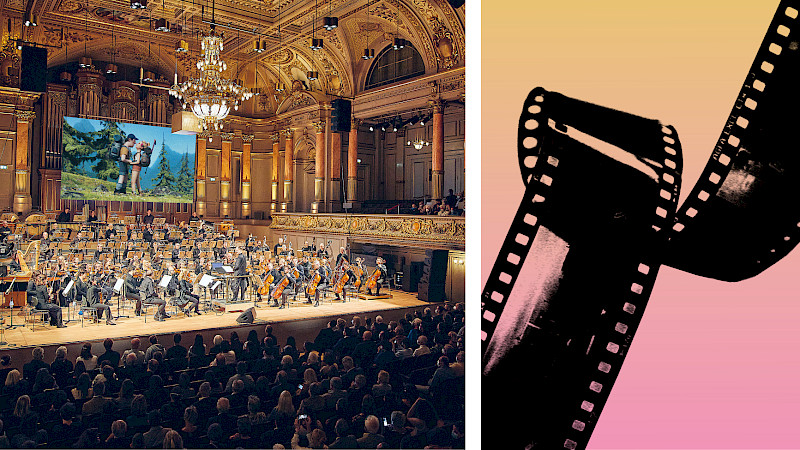
New Sounds for the Most Sinister of the Undead
There are around 100 film scores for Friedrich Wilhelm Murnau's cult film "Nosferatu - A Symphony of Horror". The latest one is by horror specialist Christopher Young and will be premiered at the Tonhalle Zurich.
Vampires are children of the night - just like cinema: both are only brought to life by darkness. It is therefore a sensible coincidence that Bram Stoker published his epistolary novel "Dracula" in 1897. At that time, cinema was only two years old.
The list of vampire films that have been made to date is unmanageably long. However, every work on the list has to contend with the fact that the genre was founded with an almost unsurpassable masterpiece: Friedrich Wilhelm Murnau's "Nosferatu - A Symphony of Horror" (1922) was the first film adaptation of Stoker's novel. However, the production company Prana-Film had not bought the rights to it. They hoped to get away with having screenwriter Henrik Galeen tweak the plot, locations and names here and there. Dracula appeared as Count Orlok, London became Wisborg and Galeen dropped the vampire hunter Van Helsing altogether.
For Murnau, "Nosferatu - A Symphony of Horror" was the breakthrough to a great career. And to this day, the work demonstrates how predestined silent film is for the horror genre, because the absence of sound, cleverly used, massively increases the hypnotic effect of the images. Murnau does not create horror with shrill images and bloody scenes. Instead, he lets the shadows wander ominously, a funeral procession with countless coffins staggers ghostly through the streets, and the vampire leaps stiffly out of the coffin. Max Schreck alias Count Orlok alias Nosferatu, who made his film debut in this role, is still the most sinister bloodsucker in film history.
Cinema was never silent
That we put Murnau's masterpiece in the category of "silent film" is, however, part of one of the most persistent misunderstandings in film history. Cinema was never silent. From the beginning, music was an integral part. Be it because in the suburban cinema a pianist played more or less appropriate set pieces of classical music. Be it because an imposing cinema organ sounded in the film palace. Or - and this was the rule - because the cinema hired musicians for the musical accompaniment of the soundless film strips. This ranged from chamber music formations to full-blown symphony orchestras. When sound film was introduced in 1929, 13,000 musicians lost their jobs in Germany alone.
The premiere of "Nosferatu - A Symphony of Horror" was planned as a social event. On 4 March 1922 in the Marble Hall of the Zoological Gardens in Berlin, this symphony of horror was shown in public for the first time. On 7 March, the Vossische Zeitung wrote: "This is film: ghostly carriages scurry through forest gorges, spectres chase people, plague breaks out, ships sail unmanned into harbours, coffins with earth and mice flit out of cellars onto carts, into ships, into decaying holes in houses"
From the original score to the premiere
Hans Erdmann's original score, which was only known in excerpts for decades afterwards, undoubtedly played a significant role in this haunting atmosphere. It was only reconstructed in 2007 by Berndt Heller for the restored version of the film. Because Erdmann's soundtrack was not available for so long, no film was scored as often as "Nosferatu". If you include all the improvised live versions, there are probably well over a hundred musical interpretations. There is hardly a style or instrumentation that does not appear here. Even Heller's reconstruction of the original music is not without controversy. Here, too, there are several versions.
Thus the sought-after American film music composer Christopher Young is part of a long tradition with "his" Nosferatu, which will be premiered under the direction of Frank Strobel at the Tonhalle Zurich. in 1998, for example, James Bernard, one of the house composers of the British Hammer Studios, dared to tackle the work. He had already set "Dracula" with Christopher Lee to music for them in 1958.
One of the most daring and surprising settings is by the Swiss composer and conductor Armin Brunner; it was performed for the first time in 1988 at the International Music Festival in Lucerne. Brunner made exclusive use of the works of Johann Sebastian Bach, edited the material, deconstructed and compiled it in a virtuoso manner and finally led it to an ingenious symbiosis with Murnau's images. Both Bach's soulful pietism and his mathematical mania find their counterpart in Murnau's melancholy Passion play.
Legal disputes lasting many years
So Murnau became a star with "Nosferatu" and the film became a classic. The company Prana-Film, on the other hand, was not happy with it. It was not only their first film, but also their last. The company went bankrupt because the film was a failure and the two studio heads had helped themselves too generously to the company capital. As a result, their only film was seized as early as August 1922. And it got worse: Henrik Galeen, with all his changes to the material, was ultimately unable to prevent Florence Balcombe, Bram Stoker's widow, from suing for the copyrights.
the trial ended in 1925, and the verdict was literally devastating: the original and all copies of the film had to be destroyed. However, so many copies of the film already existed at the time that the judge's ruling could no longer be enforced, although litigation started anew every time the film appeared.
There will probably be no legal disputes after the Zurich screening. However, it can already be predicted that Christopher Young's setting - rousing as it hopefully is - will not be the last. "Nosferatu - A Symphony of Horror" is a nightmare we will never quite finish. That's the way it is ... with vampires ... and with cinema.
***
Christopher Young
Even as a teenager, Christopher Young loved horror films - in the meantime he has composed soundtracks for dozens of them. "Hellraiser" or "The Grudge" would be far less oppressive without his sounds, and he also found evil tones for "Spider-Man 3". Now he has written a new soundtrack for "Nosferatu": direct, dark, dramatic.





